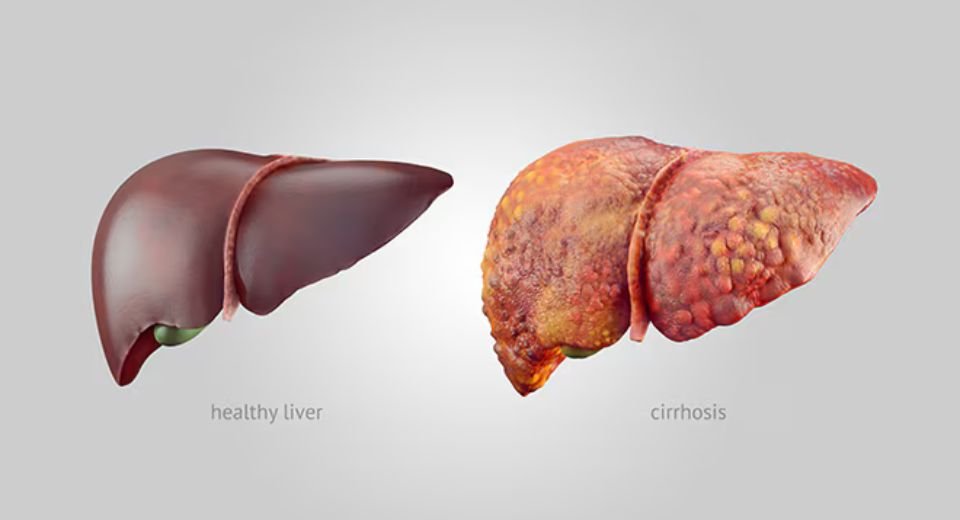HQ Team
April 24, 2025: More than 84% of 345 information technology workers surveyed in an Indian city suffer from non-alcoholic fatty liver disease due to sedentary lifestyles, posing a significant health challenge, according to a study.
The study conducted by the University of Hyderabad found a sharp rise in the prevalence of metabolic dysfunction-associated steatotic liver disease (MSLD), or earlier known as non-alcoholic fatty liver disease.
Lifestyle factors such as prolonged sitting, poor dietary habits, and lack of physical activity are primary contributors, according to the study. The combination of long working hours, physical inactivity, and poor diet is taking a toll on the younger workforce.
“These findings underscore the impact of sedentary work environments and unhealthy lifestyles on liver health,” said Dr Ankur Garg, Director & Senior Consultant, Centre for Liver-GI Diseases and Transplantation, Aakash Healthcare.
“Sedentary behaviour reduces insulin sensitivity, leading to insulin resistance — one of the key drivers of the disease. Unfortunately, our current work culture encourages long hours at desks with little regard for movement or nutrition,” said Dr Garg.
No noticeable symptoms
Metabolic dysfunction-associated steatotic liver disease often develops quietly, with fat gradually accumulating in the liver. It may not cause noticeable symptoms, making it difficult to detect without medical screening. However, the disease can escalate to non-alcoholic steatohepatitis, fibrosis, cirrhosis, or even liver cancer if left untreated.
The study surveyed 345 IT employees in Hyderabad, in the southern Indian state of Andhra Pradesh. It is one of the major IT hubs of the country, with around 1,500 information technology companies employing more than 580,000 professionals.
About 71% of information technology sector employees are obese, and about 34% have metabolic syndrome — a cluster of disease conditions that increase the risk of fatty liver, obesity, diabetes and increased blood pressure.
“The liver is a resilient organ, but this resilience often means that damage goes unnoticed until it’s too late. By the time patients come to us with symptoms like fatigue, abdominal discomfort, or unexplained weight loss, significant damage may already have occurred,” said Dr Amit Miglani, Director & HOD – Gastroenterology, Asian Hospital.
Doctors are observing that while obesity, diabetes, and high cholesterol remain common risk factors, an increasing number of cases are being reported among non-obese individuals. This trend points to the multifactorial nature of the disease, with genetics, insulin resistance, and visceral fat playing critical roles.
‘Overweight, diabetic’
“Fatty liver is no longer a disease confined to those who are overweight or diabetic. We’re now diagnosing young, seemingly healthy professionals who barely show any symptoms until the condition is in an advanced stage,” said Dr Abhishek Yadav, Consultant and Director – HPB and Liver Transplant Surgeon, Jupiter Hospital.
“Many of our patients with fatty liver have a normal body mass index but still show signs of metabolic dysfunction. This tells us that lifestyle choices and genetic predisposition can be just as damaging as excess weight.”
The liver plays a critical role in filtering toxins from the blood, and when its function is compromised, harmful substances like ammonia can accumulate and affect brain function, Dr Praveen Gupta, Principal Director & Chief of Neurology, Fortis Hospital, said.
“There’s growing evidence that the gut-liver-brain axis is significantly affected in patients with the disease. When liver health deteriorates, it can lead to subtle but chronic neurological disturbances that often go unnoticed until they worsen (resulting in) memory lapses, difficulty concentrating, slowed thinking, mood changes, irritability or depression, and disturbed sleep patterns.
“In more severe cases, coordination problems or tremors may occur,” Dr Gupta explained.
Early interventions
Early intervention, lifestyle changes, and regular medical check-ups could help curb the growing burden of fatty liver disease.
“We need to shift focus from treatment to prevention. Simple lifestyle modifications like 30 minutes of daily exercise, reducing processed food intake, and consuming more fibre-rich diets can go a long way in preventing fatty liver disease.” Dr Aakaar Kapoor, CEO & Lead Medical Advisor, City X-Ray and Scan Clinic Pvt Ltd.
A recent systematic review recorded the prevalence of MAFLD in the general Indian population at 38.6%. Another large cross-sectional study in the capital city of Delhi among the general population has revealed a higher prevalence of 56.4%.
A city in the western region of India, Goa, has for a long time reported alcoholic liver disease, but a study has reported a 34.8% prevalence of MAFLD.
